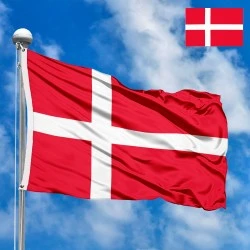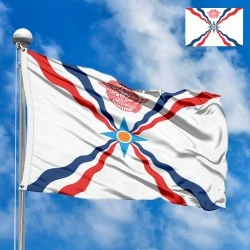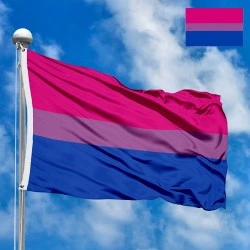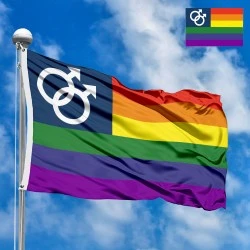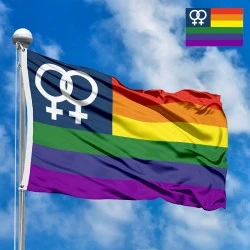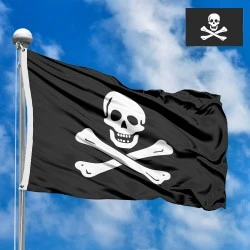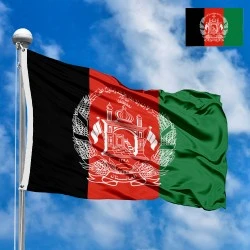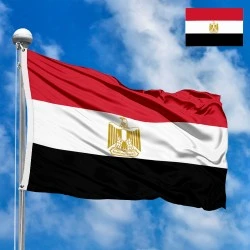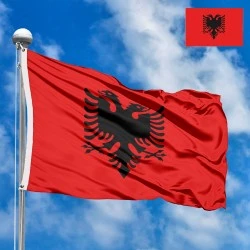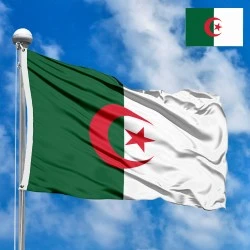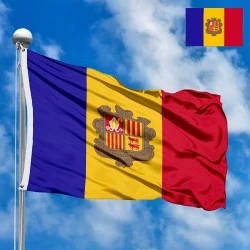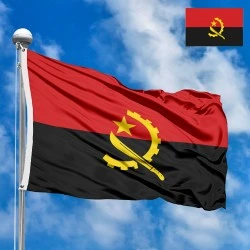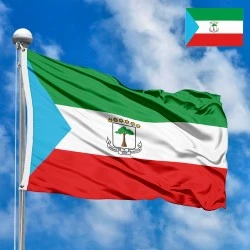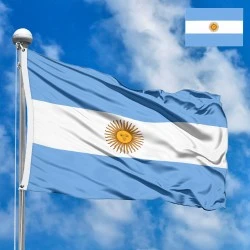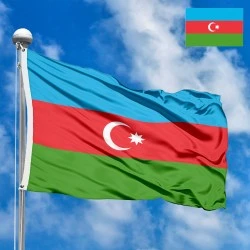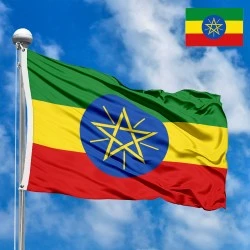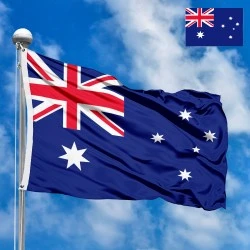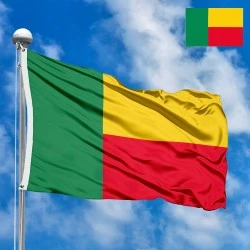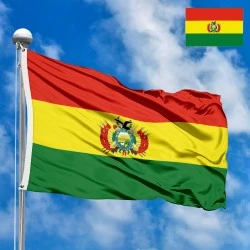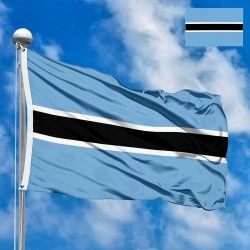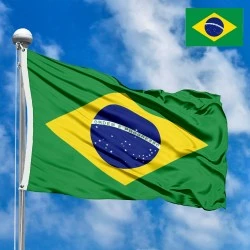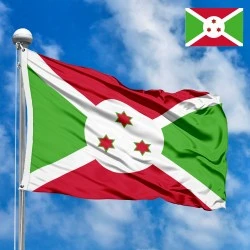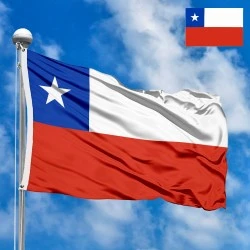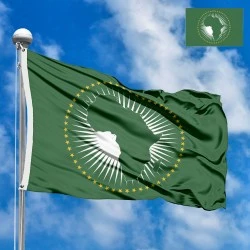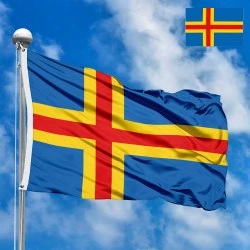Flag of the Faroe Islands
- Flag Type: Regional
- Proportions (official): 8:11
- Official name: Faroe Islands
- Sovereignty (year): NO (Part of Denmark)
- Member of Organizations: Nordic Council
- Country code, territory: FO, FRO, 234
- Capital: Tórshavn
- Large cities: Klaksvík, Runavík, Fuglafjørður
- Population: 54,000 (2024, Hagstova Føroya)
- Religions: Christianity ~80%, other/none ~20%
- Area (km²): 1 399
- Highest point: Slættaratindur (880 m)
- Lowest point: Atlantic Ocean (0 m)
- Currency: Danish Krone (DKK, kr)
- Languages: Faroese, Danish
- Dialing code: +298
- National domain: .fo
Flag Information
General information
Demography and Culture
Economy and communications
- All Flags
- Flags of Countries by Continent
-
Flags of Organizations
- Flags of UN countries
- Flags of the European Union countries
- Flags of NATO countries
- Flags of the countries of the Organization of Islamic Cooperation
- Flags of the countries of the Organization of American States
- Flags of the Arab League countries
- Flags of the African Union countries
- Flags of the countries of the Union of South American Nations
- Flags of the Commonwealth of Nations
- Flags of the countries of the Secretariat of the Pacific Community
- Flags of the Nordic Council countries
- Flags of the Caribbean Community
- Flags of the countries of the Association of Southeast Asian Nations
- Flags of the East African Community
- Flags of the countries of the Organization of Turkic States
- LGBT Community Flags
- Historical Flags
- Ethnic Flags
- Flags of the USA (states)
Description
The flag of the Faroe Islands, known as "Merkið," meaning "The Banner" in Faroese, is not merely a national symbol but a powerful expression of the unique identity, rich history, and aspiration for self-determination of this archipelago in the North Atlantic. It embodies the spirit of freedom, a deep connection to the sea, and a Christian heritage, holding a central place in the hearts of Faroese people as a beacon of their culture and autonomy.
Description and Elements of the Flag
The flag of the Faroe Islands consists of a white field with a red Scandinavian cross, outlined in blue. The cross is off-centered towards the hoist (as is common on most Scandinavian flags).
-
White color: The main background of the flag. White symbolizes purity, peace, and the bright sky of the Faroe Islands. It can also be associated with the clean snow covering the mountains in winter and the white crests of waves breaking on the shores. In a deeper sense, white can represent the pristine purity and simplicity of island life.
-
Red cross: The red color of the cross symbolizes the blood shed for the independence and freedom of the Faroe Islands. It is also a color traditionally associated with Denmark, highlighting the historical connection while still asserting a distinct Faroese identity. It expresses the strength, courage, and passion of the people.
-
Blue fimbriation (outline): The blue color outlining the red cross symbolizes the sea that surrounds the Faroe Islands and forms the basis of their life and economy. Blue can also represent the deep blue sky and distant horizons, as well as a connection to other Nordic countries like Norway and Iceland, whose flags also feature blue. It gives the flag a special depth and makes the cross stand out.
-
Scandinavian cross: The cross itself is a common symbol for Nordic countries, indicating a shared cultural and historical heritage, as well as Christian roots. Its off-center position towards the hoist gives the flag dynamism and is a characteristic feature of Nordic flags.
Size and Proportions
The official proportions of the flag of the Faroe Islands are 8:11 (height to length). The stripes of the cross have the following ratios:
-
Vertical white stripes at the edges: 3 units.
-
Blue outline: 1 unit.
-
Red cross: 2 units.
-
Again, blue outline: 1 unit.
-
White stripe in the center: 3 units.
Thus, if the length of the flag is 22 units, the width of the cross will be (1+2+1) = 4 units, and the length of the horizontal part of the cross will be (1+2+1) = 4 units. This creates a visually harmonious and recognizable design.
History of the Flag's Creation
The history of the flag of the Faroe Islands is unique because it was not created by royal decree or parliamentary act, but by young Faroese students in Denmark. "Merkið" was designed in 1919 by Jens Oliver Lisberg, Thomas Dahl, and Paul Dahl in Copenhagen. Their goal was to create a symbol that would reflect the growing national consciousness of the Faroese people and their desire for greater autonomy from Denmark.
The first public use of the flag took place on June 22, 1919, when it was hoisted at the Faroese Chapel in Copenhagen. However, until World War II, the flag had no official status in the Faroe Islands. Danish authorities did not approve of its use, seeing it as a sign of separatist sentiment.
The turning point came during World War II, when Denmark was occupied by Germany (April 9, 1940). The Faroe Islands came under British occupation (Operation Valentine). With communication severed from occupied Denmark, the British government urgently needed an identifying mark for Faroese fishing vessels to distinguish them from Danish ones, which could be attacked. Winston Churchill personally instructed to recognize "Merkið" as the official flag of the Faroe Islands for use at sea.
On February 16, 1942, British authorities officially recognized "Merkið" as the flag used on Faroese vessels. This event held immense symbolic significance for the Faroese people, strengthening their sense of national identity and aspiration for self-governance. After the war, in 1948, when the Faroe Islands gained extended autonomy within the Kingdom of Denmark (Home Rule Act), "Merkið" was officially recognized as the national flag of the Faroe Islands.
Country and Region
The Faroe Islands (Faroese: Føroyar, Danish: Færøerne) are a self-governing territory in the North Atlantic, part of the Kingdom of Denmark. They are located approximately halfway between Scotland and Iceland. Geographically and culturally, the Faroe Islands are part of Northern Europe, specifically the Nordic region.
Despite being part of the Danish Kingdom, the Faroe Islands enjoy broad autonomy. They have their own parliament (Løgtingið), government (Landsstýrið), judiciary, and flag. Faroese (føroyskt) is the primary and official language, alongside Danish. Unlike Denmark, the Faroe Islands are not members of the European Union, which allows them to maintain full control over their fishing resources, which form the basis of their economy.
Administratively, the Faroe Islands consist of 18 major islands, divided into 30 municipalities. The capital is Tórshavn, located on the island of Streymoy.
Interesting Facts
-
"Merkið" - "The Banner": The name "Merkið" literally means "the banner" or "the sign," emphasizing its role as a symbol of the people, rather than just a state symbol.
-
Student Creation: The flag was conceived not by the government, but by a group of students, which gives it a special, popular character. This makes it one of the few national flags created in this manner.
-
Occupation and Recognition: The recognition of the flag by British authorities during World War II was a pivotal moment in the history of Faroese self-determination. It was the first time "Merkið" received official international recognition.
-
Fishing Economy: The sea and fishing are so vital to the Faroe Islands that this is reflected in the blue color of the flag. The islands' economy is almost entirely dependent on fishing, which also explains their refusal to join the EU.
-
Bird Paradise: The Faroe Islands are known for their vast colonies of seabirds, including puffins. Birds are an important part of the local ecosystem and culture.
-
Unique Language: The Faroese language is one of the oldest languages in Northern Europe, developed from Old Norse, and has significant differences from Danish, which is another element of the unique Faroese identity.
-
Unofficial Use before 1940s: Before World War II, the flag was used unofficially at sporting events, festivals, and gatherings, but was not recognized by Danish authorities. This demonstrates the resilience and perseverance of the Faroese people in asserting their identity.
Adoption and Significance for Inhabitants
The official adoption of "Merkið" as the national flag took place on March 23, 1948, when the Danish Home Rule Act for the Faroe Islands came into force. This day is one of the most important holidays in the Faroe Islands and is celebrated as Flag Day (Flaggdagur).
For the inhabitants of the Faroe Islands, "Merkið" holds deep and multifaceted significance:
-
Symbol of National Identity: It is the primary symbol of their unique culture, language, and history, distinguishing them from Danes and other Nordic peoples. The flag is a powerful unifying element, bringing Faroese people together worldwide.
-
Expression of Autonomy and Self-Governance: "Merkið" serves as a constant reminder of the struggle for autonomy and the self-governance achieved. It symbolizes their right to make their own decisions and manage their own affairs.
-
Connection to Past and Future: The flag reflects their historical ties to Denmark and Scandinavia but also points to their own aspirations for development and preservation of their uniqueness. It symbolizes both the past and future aspirations of the nation.
-
Spiritual Connection to Homeland: The colors and elements of the flag – white snow, blue sea, red mountains – deeply resonate with the nature of the Faroe Islands, creating a sense of deep attachment to their land among the inhabitants.
-
Symbol of Freedom and Resistance: The history of the flag, especially its recognition during the war, makes it a symbol of resilience and the people's ability to self-determine even under difficult circumstances.
-
Everyday Presence: The flag is widely used in daily life: on homes, boats, in government buildings, and during celebrations. Its constant presence reinforces a sense of pride and belonging to the Faroe Islands.
"Merkið" is more than just a piece of fabric; it is a living history, the spirit of a nation, and a guarantee of its future. It unites Faroese people wherever they may be and reminds them of their unique place in the world.
In the demonstration images, full-size flags are shown with proportions of 2:3, and hand-held flags with proportions of 1:2.
Donation
Download
Completely free for commercial and non-commercial use (public domain).
You can freely use them in your news magazines, websites, software, mobile applications.
We appreciate a backlink to https://flagssite.com
Raster files - Flag of the Faroe Islands (PNG, JPG)
 Waving flag
Waving flag
- PNG format (transparent background), 72dpi, dimensions in Pixels (px), aspect ratio 3:4.
- 15х20 px
- 30х40 px
- 60х80 px
- 120x160 px
- 240x320 px
 Sizes:
Sizes:
"v15" - image size (by height); if necessary, replace with available: v15, v30, v60, v120, v240.
!!! For resizing, use the Latin (eng) keyboard layout.
<img src="https://flagssite.com/flags/v15/20259.png" alt="Flag of the Faroe Islands">
 Round flag
Round flag
- PNG format (transparent background), 72dpi, dimensions in Pixels (px), aspect ratio 1:1.
"d15" - image size (diameter); if necessary, replace with available: d15, d30, d60, d120, d240.
!!! For resizing, use the Latin (eng) keyboard layout.
<img src="https://flagssite.com/flags/d15/20259.png" alt="Flag of the Faroe Islands">
 Rectangular flag 2:3
Rectangular flag 2:3
- JPG format, 72dpi, dimensions in Pixels (px), aspect ratio 2:3.
"h30" - image size (by height); if necessary, replace with available: h15, h30, h60, h120, h240, h360, h480.
!!! For resizing, use the Latin (eng) keyboard layout.
<img src="https://flagssite.com/flags/h30/20259.jpg" alt="Flag of the Faroe Islands">


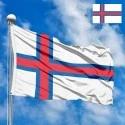
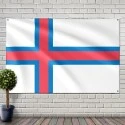
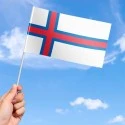

 Sizes:
Sizes:
 Sizes:
Sizes:
